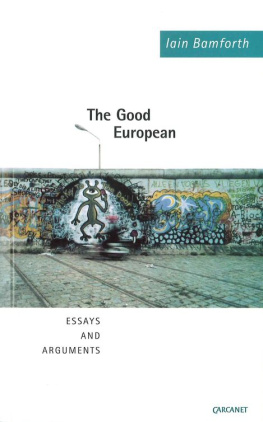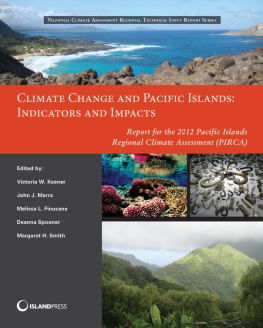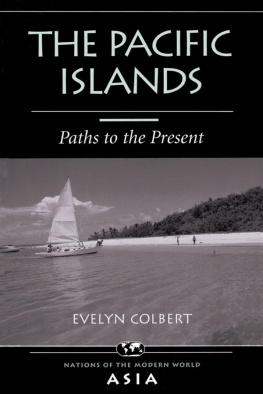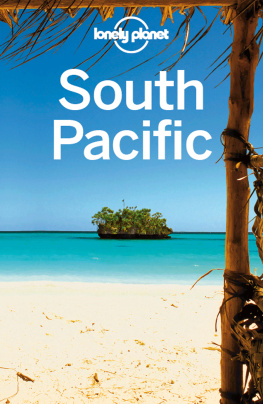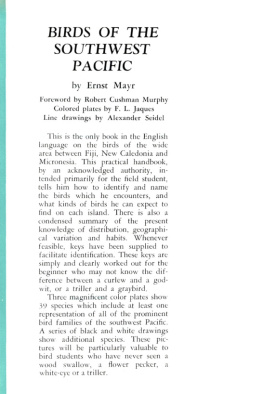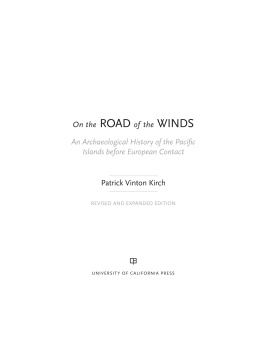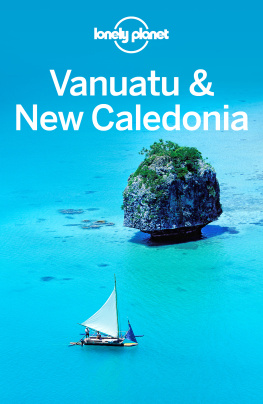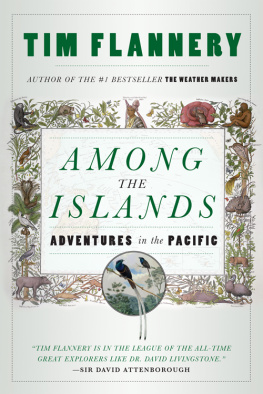PRAISE FOR DEEP FIELD: DISPATCHES FROM THE FRONTLINES OF AID RELIEF
Hes also one hell of a storyteller and wordsmith: astute, descriptive, ironic, funny and philosophical. As Australians argue over the reductive logic of Stopping the Boats, Bamforth illuminates the intricacies and entanglements of history, politics and self-interest and introduces us to the eccentrics who keep ploughing through it all for a better world. Verdict: Astonishing.
Herald Sun
It reads as if Don Delillo had been sent to Darfur.
John Freeman, Granta
Contents
From above, Kiribati looked spectacular: the image of a Pacific paradise sold in tourist brochures and on package holiday websites. The main atoll of Tarawa was a thin, L-shaped sliver of bone-white sand lined by a blur of coconut palms and surrounded by the green and turquoise waters of the lagoon. It resembled a place of honeymoons, winter escapes, family adventures and seclusion from the pressures of life and work.
As the plane descended through a cloudless sky, I dreamed of running straight from the landing strip to the ocean and diving into its cool, glinting colours. Once and for all, the stale air conditioning of the previous twelve hours in planes and airport lounges would be left behind. Many have had this dream. In the early 1990s, a British student called Dan Wilson found himself doing a holiday job on the PolishGerman border during a particularly harsh winter of climatic and economic malaise. With few financial resources available and only his imagination to rely on, Wilson had a stroke of genius. He wrote to the government of Kiribati and suggested that they appoint him poet laureate, offering his services in verse:
Id like to live in Kiribati
I feel its the country for me
Writing poems for all the people
Under a coconut tree.
Surprised, but not entirely taken in by the charms of Wilsons doggerel, the government accepted his proposal and appointed him to the position. Wilson was given a hut to live in but, so that he would not be too much of a nuisance to anyone, the government ensured that it was conveniently located on one of the outer islands.
From the air, the beaches, palms and crystal waters of the Tarawa lagoon made it seem the perfect place to write poems under a coconut tree, but on the ground the reality was different. By the time of my first visit in 2009, the southern part of Tarawa was densely populated. Including its water territories, Kiribati occupied an area about half the size of Australia and was the biggest of the Pacifics large ocean states. Yet the majority of the countrys one hundred thousand people have moved from outer islands to the atoll of South Tarawa in search of jobs. As with other archipelago states in the Pacific, the countrys population was initially dispersed across the islands, but in the years following independence in 1979 this changed with the concentration of economic activity and state resources in the capital. The introduction of a money economy and changes in occupation and lifestyle led to accelerated migration from the outer islands to Tarawa. Similar urbanisation had occurred throughout the Pacific as nuclear testing, climate change, the power of cash, the possibility of overseas migration and the increasing difficulty, unpredictability and unfashionability of agricultural life caused a gradual decline in the traditions of communal and subsistence living elsewhere. Growing yams and fishing as a way of life in the villages had given way to purchasing instant noodles, Fanta Orange and spam at the local store in the capital. These stores were often run by recently arrived Chinese migrants who, reflecting broader geopolitical unease about the growing influence of China in the region, were sometimes subjected to varying degrees of racial denigration. In Tonga, for example, I was always directed to the Chinese shop whenever I needed anything, as if the hundreds of Chinese-run enterprises in the capital were all one and the same. In some areas of the Pacific, especially Kiribati, the Marshall Islands and French Polynesia, traditional lives and livelihoods were no longer even possible on islands that had been vaporised by nuclear testing.
Densely populated urban life in the Pacific has brought additional concerns. Traditionally, the ocean was the great sanitiser of island life, particularly for those living on atolls. With small populations scattered among the islands, waste, effluence and excreta were borne away instantly in the vast currents of the Pacific Ocean. In Kiribati, with most of the population now crowded onto one small atoll, the local environmental balance had begun to shift. This was especially true in the shallower waters of the lagoon, which, during my visits, were contaminated with sewage. I was under strict instructions not to eat the fish, for fear of ciguatera poisoning. More alarming still, the atoll states of the Pacific were dependent on rainwater, which percolated through holes in the dead coral of the atoll into a freshwater lens that floated on the heavier saltwater of the ocean beneath. Sea level rise and the increasing number, unpredictability and severity of droughts had begun to alter the balance of saltwater and freshwater in the lens, with the result that existing freshwater sources were becoming saline. This problem was compounded by additional water pumping to meet the needs of the growing population, whose waste and effluence were disposed back into the lagoon and sometimes into the freshwater lens itself. By 2014, the twin processes of development and climate change led the government of Kiribati under former president Anote Tong to buy land more than 2000 kilometres away in Fiji to sustain future settlement.
There has been substantial investment in climate change adaptation since I first visited Kiribati in 2009, when the country presented a grim image of the future. Surrounded by collapsing seawalls and the wreckage of mitigation projects that had fallen apart through lack of maintenance and the remorseless pressures of the sea, I met with an international aid official who managed large-scale infrastructure investment programs. We fully support Kiribati, she said, but informally we recognise that, in the longer term, we promote migration with dignity.
If climate change, urbanisation and migration had brought great changes to life in the Pacific, the region was also remarkable for its ingenuity, resilience and independence. South Tarawa may have been overcrowded, but Kiribati like many of the Pacific island states had achieved the extraordinary. It is a viable, stable country with well-managed finances that had preserved its language and culture on the islands and atolls of the largest ocean on earth. The small island states Kiribati, Tuvalu, Fiji and the Marshall Islands have played leading roles in some of the most pressing, urgent and complex global debates, among them climate change, environmental sustainability, nuclear disarmament and the future of the worlds oceans. In a sign of their confidence, these so-called micro-states have, like Tuvalu (population 11,000), rejected the view that population size or landmass matter. They have embraced the seagoing boldness of their ancestors, preferring to be known as large ocean states. Despite the experience of colonialism, nuclear testing, resource exploitation and great power rivalry, language, custom and identity have been preserved, often providing the basis for forms of resistance. The revival of the ancient art of canoe building in the Marshall Islands and the revolution in Bougainville that was in part a reaction to the environmental destruction caused by mining were ways in which islanders chose their own futures, sometimes at great cost. While traditional Pacific societies survived against the odds, migration to cities has seen the development of newer urban cultures with their own evolving dynamic across the region.


